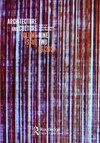在经济衰退时期建设哥本哈根——在城市“宜居”之前重新评估20世纪90年代后现代主义城市发展
IF 1.8
0 ARCHITECTURE
引用次数: 2
摘要
摘要在这篇文章中,我认为,尽管哥本哈根的后现代建筑外观有限,风格和规划怪异,建筑质量差,在建筑遗产方面处于贱民地位,但它是丹麦福利建筑城市发展的内在组成部分。我想表明,哥本哈根的后现代主义发展在很大程度上因错误的原因而受到批评,这一时期可以提供替代愿景,而不会不可避免地将宜居性和城市生活质量与经济增长和消费主义联系在一起。此外,我认为,这种重新解释让我们对哥本哈根从贫困和默默无闻变成我们今天所知的繁荣而宜居的城市中心这一转折点上出现的建筑有了更为不同的理解,这要归功于1989年政府报告《Hovestaden,hvad vil vi med den》之后的基础设施投资?(“首都,它应该去哪里?”)。本文章由计算机程序翻译,如有差异,请以英文原文为准。
Constructing Copenhagen in a Time of Economic Downturn: Reevaluating 1990s Postmodernist Urban Development before the City Became “Livable”
Abstract In this article, I argue that despite its limited appearances, stylistic and planning oddities, poor building quality, and current pariah status in terms of building heritage, Copenhagen’s postmodern architecture is an intrinsic part of the Danish welfare architecture urban development. I wish to show that Copenhagen’s postmodernist development has been criticized largely for the wrong reasons, and that the period can offer alternative visions that do not inevitably yoke livability and urban quality of life to economic growth and consumerism. Moreover, I argue that this reinterpretation gives us a more differentiated understanding of the architecture that emerged at the turning point when Copenhagen went from being deprived and anonymous to become the prosperous yet livable urban center we know today, thanks to infrastructural investments following the 1989 government report Hovedstaden, hvad vil vi med den? (“the capital, where should it go?”).
求助全文
通过发布文献求助,成功后即可免费获取论文全文。
去求助
来源期刊

Architecture and Culture
ARCHITECTURE-
CiteScore
0.80
自引率
0.00%
发文量
25
期刊介绍:
Architecture and Culture, the international award winning, peer-reviewed journal of the Architectural Humanities Research Association, investigates the relationship between architecture and the culture that shapes and is shaped by it. Whether culture is understood extensively, as shared experience of everyday life, or in terms of the rules and habits of different disciplinary practices, Architecture and Culture asks how architecture participates in and engages with it – and how both culture and architecture might be reciprocally transformed. Architecture and Culture publishes exploratory research that is purposively imaginative, rigorously speculative, visually and verbally stimulating. From architects, artists and urban designers, film-makers, animators and poets, from historians of culture and architecture, from geographers, anthropologists and other social scientists, from thinkers and writers of all kinds, established and new, it solicits essays, critical reviews, interviews, fictional narratives in both images and words, art and building projects, and design hypotheses. Architecture and Culture aims to promote a conversation between all those who are curious about what architecture might be and what it can do.
 求助内容:
求助内容: 应助结果提醒方式:
应助结果提醒方式:


